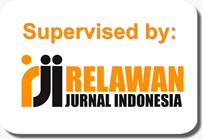IMPROVING THE QUALITY OF EDUCATIONAL HUMAN RESOURCES TO ACHIEVE INDONESIA'S VISION 2045
Abstract
This research was conducted with a descriptive qualitative type, in accordance with the readiness in the education industry to obtain outcomes regarding the quality of the Indonesian nation's human resources in facing the golden year 2045 as seen from the PISA (Program for International Student Assessment) scores, international achievements in the fields of literacy, mathematics and science in high school students / grades 9-10 at the age of 15 in the province of Bangka-Belitung. The results from observations enriched by SINTA accredited national journals and reputable international journals are strengthened by several references and secondary data, with the era this pandemic, has forced us to innovate and be competent and professional in mastering digital technology, so we need to work hard and be extra focused to improve ourselves from the policies contained in the law, the education system and the quality of teachers, so that students/students become habitual and culture in the PISA score measurement indicator which is the main standard so that Indonesia can align with the PISA standard determined by the OECD (The Organization for Economic Cooperation and Development) which is followed by developed countries and developing countries to produce high-quality human resources. international/global. When the PISA ranking in the province of Bangka-Belitung continues to improve and advance in the long term, it becomes an obligation for all provinces in Indonesia, so that by itself Indonesia will become the most prosperous and prosperous country.
Full Text:
PDFReferences
Anggraena, Yogi. (2021). “PISA 2021 dan Computational Thinking (CT)” Koordinator Pengembangan Kurikulum di Pusat Kurikulum dan Perbukuan Kemendikbud.
Darcia, Nocci et.al. (2014). “Handbook of Moral and Character Education. Educational Psychology Handbook Series”. New York & London: Routledge.
Edison, Emron. Anwar, Yohny & Komariyah, Imas. (2016). “Manajemen Sumber Daya Manusia”. Bandung: ALFABETA.
Elmi, Farida. (2018). “Telisik Manajemen Sumber Daya Manusia”, Jakarta: Mitra Wacana Media.
Empat Konsensus Dasar Bangsa, Sub Bidang Studi Pancasila. (2022). UUD NRI 1945. NKRI. Bhinneka Tunggal Ika. Lemhannas.
Fadila, R., & Rezeki, F. (2023). Pengaruh Fleksibilitas Kerja, Kompensasi Dan Iklim Kerja Terhadap Kepuasan Kerja Driver Grabbike Cikarang Utara Kabupaten Bekasi. Jurnal Administrasi dan Manajemen, 13(2), 118-124.
Imam Mulyana (2010), Kotler & Amstrong (2015) dan Kotler & Keller (2016) Tentang Teori Kualitas.
Ingham, J. (2007). “Strategic Human Capital Management”.USA: Routledge.
Isfenti Sadalia (2000).Tantangan dan Peluang SDM di Era Globalisasi.Lecture Articles.FE Jurusan Manajemen USU.
Meningkatkan Kemampuan Literasi Dasar Siswa Indonesia Berdasarkan Analisis Data PISA 2018. (2021). Pusat Penelitian Kebijakan, Badan Penelitian dan Pengembangan dan Perbukuan Kementerian Pendidikan, Kebudayaan, Riset dan Technologi. 1-7
Miller, John P., dkk., Holistic Learning and Spirituality in Education, (New York: State University of New York Press, 2005).
Mulyoto, Strategi Pembelajaran di Era Kurikulum Tahun 2013, (Jakarat:Prestasi Pustaka, 2013), cet. I.
Ohmae, Kenichi, The Borderless Wolrd, Power and Strategy in the Interlinked Economy, (USA:Haprer Business A Division of Harper Collins Publishers, 1990).
Pease, G., Byerly, B., & Fitz-enz, J. (2012). “Human Capital Analytics: How to Harness the Potential of Your Organization’s Greatest Asset”. New York United States: John Wiley & Sons Inc.
Pratiwi, I. (2019). “Efek Program PISA terhadap Kurikulum di Indonesia”.Jurnal Pendidikan dan Kebudayaan, 4(1). 51-71.
Rezeki, F., Mardiputera, H. M., & Wulandari, A. (2023). High and Low Levels of Employee Performance: The Role of Transformational Leadership Styles and Employee Engagement. Asian Journal of Management, Entrepreneurship and Social Science, 3(03), 568-584.
Ruhana, Ika. (2012). “Pengembangan Kualitas SDM VS Daya Saing Global” Jurnal Administrasi Bisnis, Vol 6 (1). 50-56.
Rurit, Bernada & Dewanto, Nugroho. (2021). “Indonesia Menuju 2045, SDM Unggul dan Teknologi Adalah Kunci”. Jakarta: Kompas Penerbit Buku.
Ryan, Damian, Understanding Digital Marketing, Marketing Strategies for Engaging The Digita Generation, (London, Philadelphia New Delhi: Kogan Page, 2014), First Edition.
S.P Hasibuan (2012), Sudarwan Danim (2012) TentangTeori Kualitas Sumber Daya Manusia.
Tiennken, C. (2017). “Understanding PISA Results”. Kappa Delta Pi Record, 53: 6–8.
Toffler, Alvin Author of Future Schock, The Third Wave, (New York: William Morrow and Company, Inc, 1980).
Ulfatin, Nurul. & Triwiyanto, Teguh. (2016). “Manajemen Sumber Daya Manusia Bidang Pendidikan”. Jakarta: Rajawali Pers
Undang-undang Nomor74Tahun2008 tentangGuru,(Jakarta:Kementerian Pendidikan dan Kebudayaan, 2008), cet. I.
UNICEF Country Office. (2019). “PISA 2015 Results and Education Policy Recommendations.Ministry of Education of Montenegro”. Podgorica: UNICEF Country Office.
-Vermonte, Philips J. Hirawan, & Fajar B. Okthariza, Noory. (2021). “Indonesia Menuju 2045, Mencapai Kemajuan Ekonomi Berbasis Inovasi dan Ilmu.
DOI: https://doi.org/10.31846/jae.v11i3.714
Refbacks
- There are currently no refbacks.

This work is licensed under a Creative Commons Attribution-NonCommercial-NoDerivatives 4.0 International License.
e-Jurnal Apresiasi Ekonnomi Indexed by:












